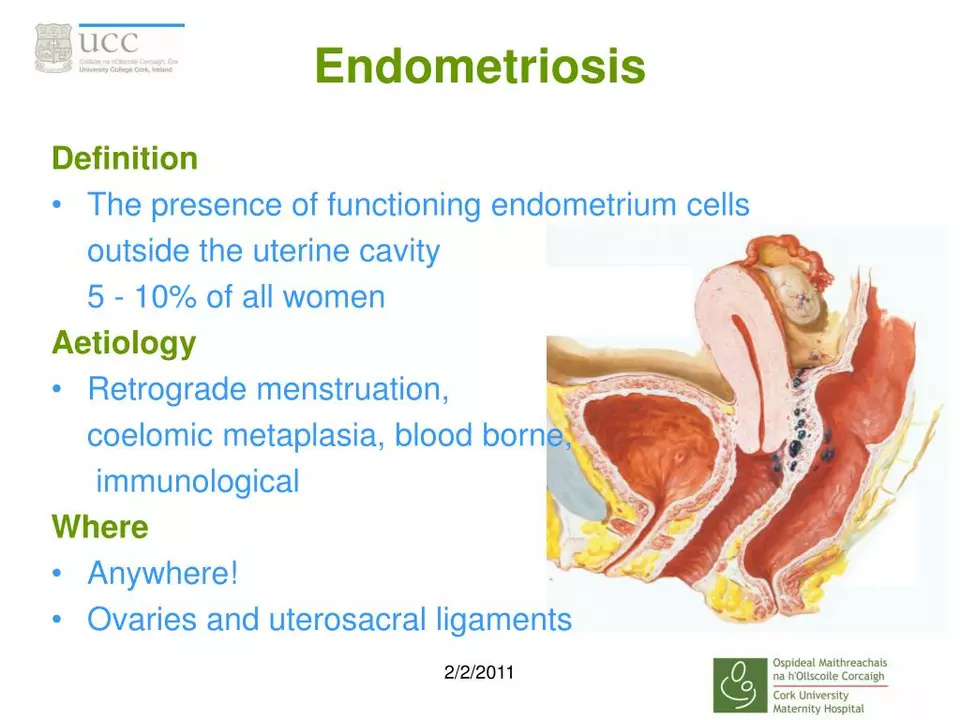Understanding the Uterine Lining and Its Function
The uterine lining, also known as the endometrium, is a crucial part of a woman's reproductive system. It is the innermost layer of the uterus and is responsible for the implantation of a fertilized egg, which then develops into an embryo. The endometrium undergoes cyclic changes throughout the menstrual cycle, preparing itself for possible pregnancy. If fertilization does not occur, the lining is shed as menstrual blood during menstruation.
In this article, we will explore the link between overgrowth in the uterine lining (endometrial hyperplasia) and endometrial cancer. Understanding the connection between these two conditions can help in early detection and treatment, ultimately improving the prognosis and quality of life for women affected by endometrial cancer.
What Is Endometrial Hyperplasia?
Endometrial hyperplasia occurs when the uterine lining becomes thicker than normal. This can happen for various reasons, such as hormonal imbalances, obesity, or the use of certain medications. When the balance of estrogen and progesterone is disrupted, the endometrium can grow excessively, leading to endometrial hyperplasia.
There are different types of endometrial hyperplasia, classified based on the cell patterns and the risk of developing endometrial cancer. Simple endometrial hyperplasia has a lower risk, while complex hyperplasia with atypia has the highest risk of progressing to cancer. Early diagnosis and treatment of endometrial hyperplasia can prevent the development of endometrial cancer in many cases.
Endometrial Cancer: Symptoms and Risk Factors
Endometrial cancer is a type of cancer that originates in the lining of the uterus. It is the most common gynecological cancer in the United States. The most common symptom of endometrial cancer is abnormal vaginal bleeding, especially after menopause. Other symptoms may include pelvic pain, painful intercourse, and an enlarged uterus.
Several risk factors can increase the likelihood of developing endometrial cancer, such as obesity, early menstruation, late menopause, never having given birth, and a family history of endometrial or colorectal cancer. However, having one or more risk factors does not necessarily mean that a woman will develop endometrial cancer.
How Endometrial Hyperplasia Can Lead to Cancer
As mentioned earlier, endometrial hyperplasia is the abnormal thickening of the uterine lining. When the endometrium grows excessively, the cells can become crowded and start to change their appearance. In some cases, these abnormal cells can become malignant, leading to the development of endometrial cancer.
Complex endometrial hyperplasia with atypia has the highest risk of progressing to cancer. Women with this type of hyperplasia should be monitored closely by their healthcare providers and may require treatment to prevent the progression to cancer.
Diagnosis and Treatment of Endometrial Hyperplasia
If a woman experiences symptoms suggestive of endometrial hyperplasia, such as abnormal uterine bleeding, her healthcare provider may perform various tests to diagnose the condition. These tests may include a pelvic exam, transvaginal ultrasound, endometrial biopsy, or hysteroscopy.
Treatment for endometrial hyperplasia depends on the severity and type of the condition. For simple hyperplasia without atypia, hormonal therapy with progesterone may be prescribed to help balance the levels of estrogen and progesterone. In more severe cases, such as complex hyperplasia with atypia, a hysterectomy (surgical removal of the uterus) may be recommended to prevent the progression to cancer.
Prevention and Early Detection of Endometrial Cancer
While it may not be possible to prevent endometrial cancer entirely, there are steps women can take to reduce their risk. Maintaining a healthy weight, exercising regularly, and consuming a balanced diet can help promote hormonal balance and reduce the risk of endometrial hyperplasia.
Additionally, women should be aware of the symptoms of endometrial cancer and report any abnormal vaginal bleeding to their healthcare provider. Early detection and treatment of endometrial hyperplasia can significantly decrease the risk of developing endometrial cancer.
Conclusion
In conclusion, endometrial hyperplasia is a condition characterized by the abnormal thickening of the uterine lining, which can increase the risk of developing endometrial cancer. By understanding the link between these two conditions, women can take steps to reduce their risk and seek appropriate medical care when necessary. Early detection and treatment of endometrial hyperplasia can significantly improve the prognosis and quality of life for women affected by endometrial cancer.





Michael Ieradi
Thanks for summarizing the connection between endometrial hyperplasia and cancer; it’s a helpful primer. The article correctly notes that hormonal imbalance is a key driver of hyperplasia. Monitoring simple hyperplasia can often prevent progression, especially with progesterone therapy. It’s also important to recognize that not all thickening leads to malignancy.
Stephanie Zuidervliet
Well, this article is a total snooze fest!!!
Olivia Crowe
Honestly, this information gives hope-early detection really does save lives! Stay positive and keep up with regular check‑ups; they’re the best defense. Remember, knowledge empowers us to take action.
Aayush Shastri
Reading this reminded me of how we approach women's health in different cultures. In many parts of India, for example, awareness about endometrial hyperplasia is still growing, and men often play a supportive role in encouraging women to seek care.
We celebrate the fact that education campaigns are now targeting schools, emphasizing the importance of recognizing abnormal bleeding early. Traditional diets rich in spices and plant‑based foods can help maintain hormonal balance, though they’re not a substitute for medical advice.
Community health workers frequently organize free screening camps, which has increased early detection rates dramatically. Moreover, family support systems are crucial; when a woman feels backed by her loved ones, she’s more likely to follow through with treatment plans.
The healthcare system here is also embracing minimally invasive hysteroscopic procedures, making diagnosis less intimidating. Insurance coverage for hormonal therapies is expanding, reducing the financial burden for many.
It’s encouraging to see interdisciplinary collaboration between gynecologists, nutritionists, and mental‑health professionals to address both physical and emotional aspects of the condition.
Overall, the message of early detection resonates globally, and sharing these insights across borders can only strengthen our collective fight against endometrial cancer.
Quinn S.
While the article is generally accurate, there are several grammatical oversights that merit correction. First, the phrase "her healthcare provider may perform various tests" should employ the plural "their" to maintain gender‑neutral language. Second, "hysterectomy (surgical removal of the uterus)" would be clearer if set off by em dashes rather than parentheses. Lastly, the term "early detection and treatment" is redundant; either "early detection" or "treatment" suffices.
Dilip Parmanand
Great rundown! Stay active, keep a healthy weight, and don’t ignore any unusual bleeding. Small steps lead to big protection.